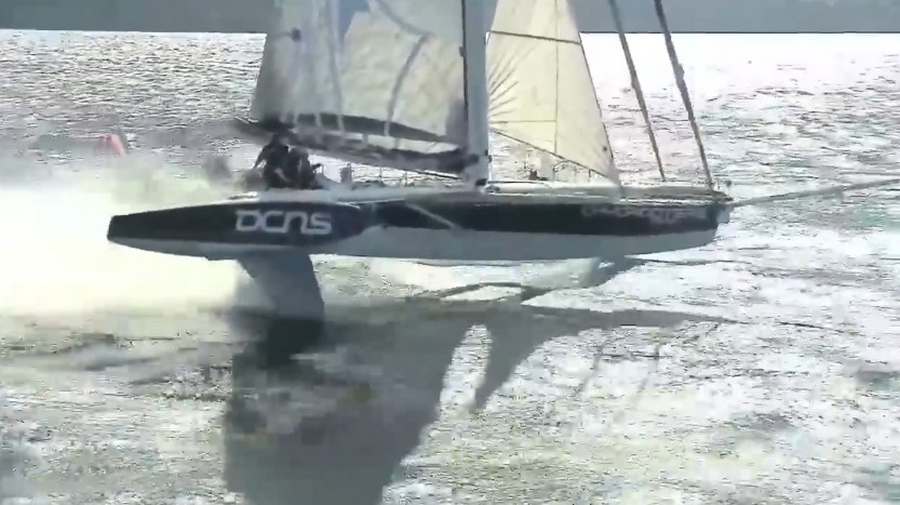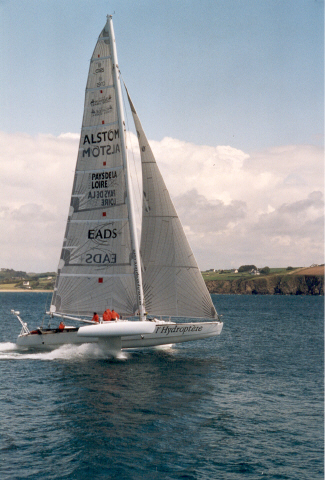Windseeker Hydroptere a flying sailboat
- Boating-greece

- Nov 5, 2023
- 2 min read

The world's fastest trimaran sailboat combines dream and high technology.
This extraordinary sailboat can fly over the oceans.
The Hydroptere is a unique and innovative project, which combines the best techniques of navigation and aerodynamics.
With passion and boldness, the Hydroptere team took advantage of technological innovations to create a pioneering flying boat that will be reliable, combining perfection.
The story of Hydroptere did not start yesterday…
Hydroptère is a French experimental hydrofoil trimaran sailboat inspired by Éric Tabarly. The Hydroptère project was managed by Alain Thébault, the design by naval architects VPLP design and the construction by a group of French high-tech companies. The multihull hydrofoil design allows the sailing craft to reach high speeds on the water. The design is based on experience from a series of sailing hydrofoils built by Thébault in collaboration with Éric Tabarly since the 1980s. On 5 October 2008 she reached a record speed of 52.86 knots (97.90 km/h; 60.83 mph) .
And so with constant improvements, in early 2014, Alain Thébault, Anders Bringdal and their team of engineers from the aircraft industry – led by Philippe Perrier (Dassault Aviation) and Maurice Prat (Airbus) – started the Hydroptere project Rocket, whose goal is to increase the final speed record in sailing to 150 km/h (80 knots) averaged over 500 meters.
When the Hydroptere is in flight only two square meters of the vessel is in contact with the water.
It can reach a maximum speed of 56 knots and accelerate 20-40 knots in just ten seconds.
The acceleration is greater than that of a speedboat with two 2 X 250 HP engines.
The Hydroptere is piloted in three dimensions with a joystick that manages the balance of the vessel
There are 30 ways to calculate measurement for the boat that show the pressures in real time
The boat is equipped with an inertial unit from OCTANS
Wing pressure absorbers are designed on the principle of aircraft landing gear. They absorb the pressure of 32 tons.
There can be up to 48 tons of pressure on the stringers that hold the main beam. The staysails of the mainsail are designed to withstand 100 tons.
There is 10 m² of living space on the central surface
The boat requires 12 knots to take off, but can then cruise at twice the wind speed. "The Hydroptere Rocket will be able to sail 4 times the speed of the wind and is expected to reach 80 knots average speed" said Philippe Perrier, Aeronautical Engineer
The combination of passion and technology has led to the construction of a sailing boat that can develop great speed and fly on the waves!







